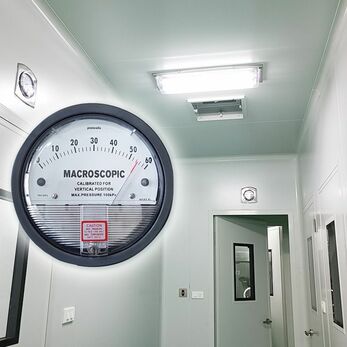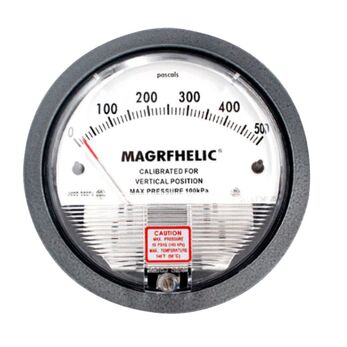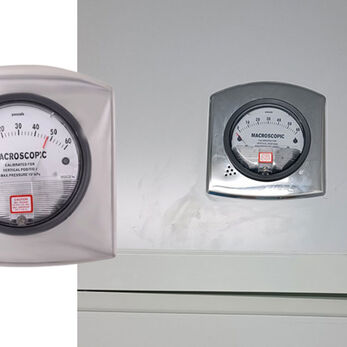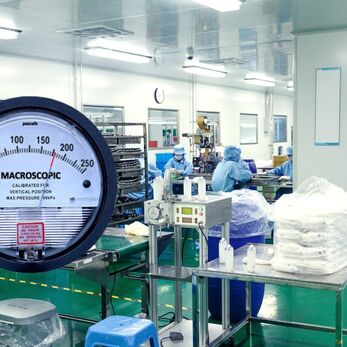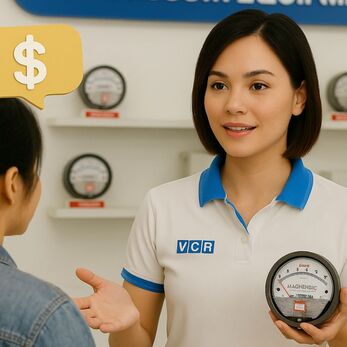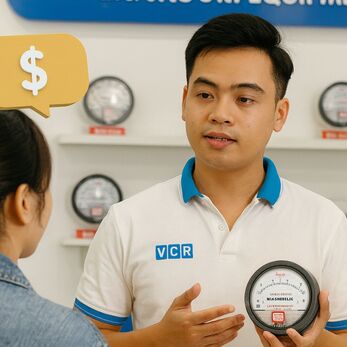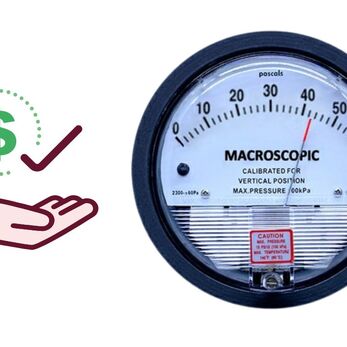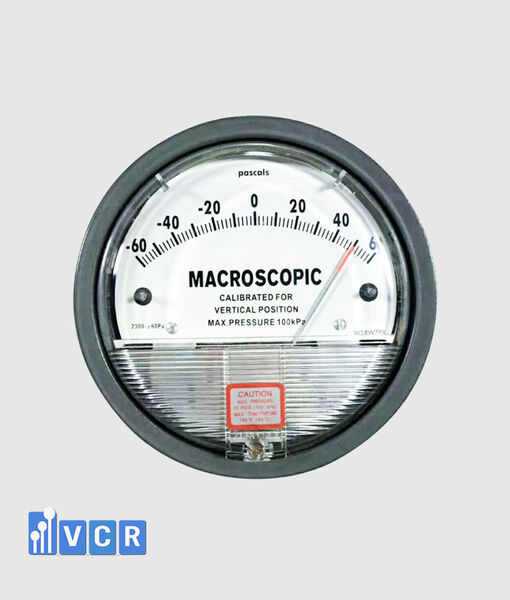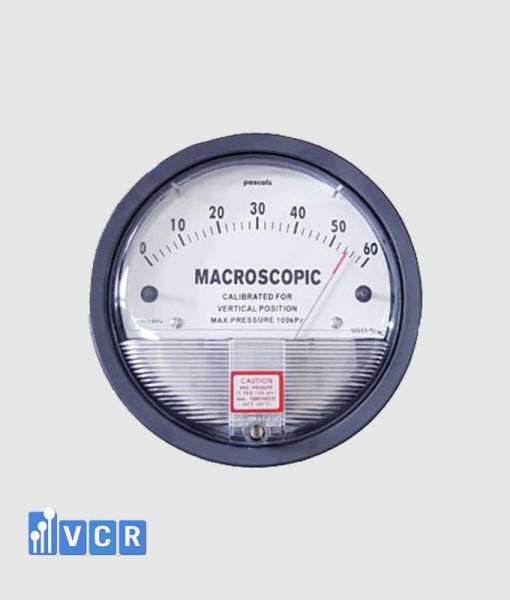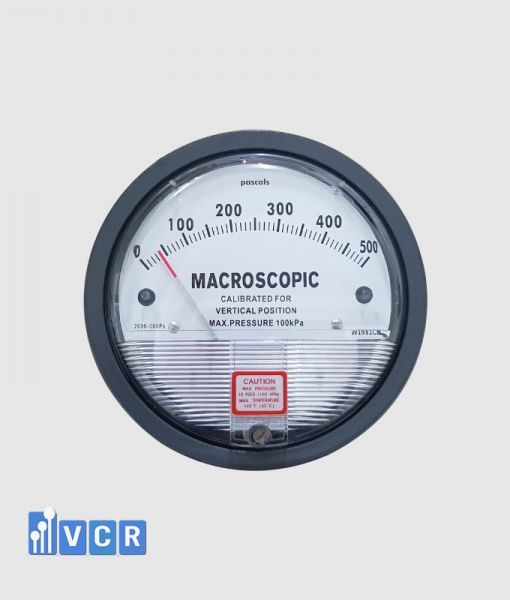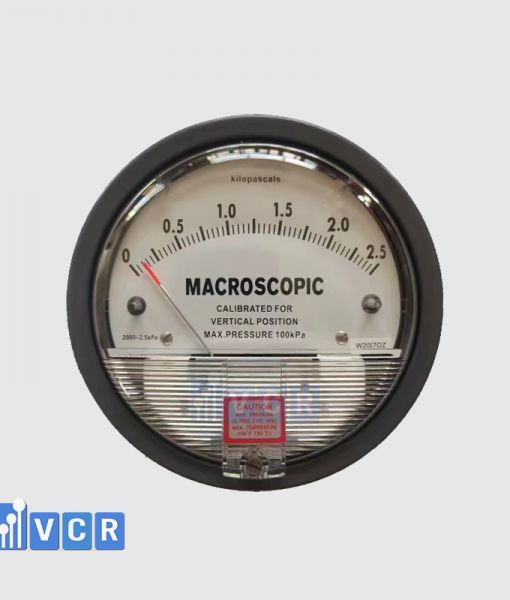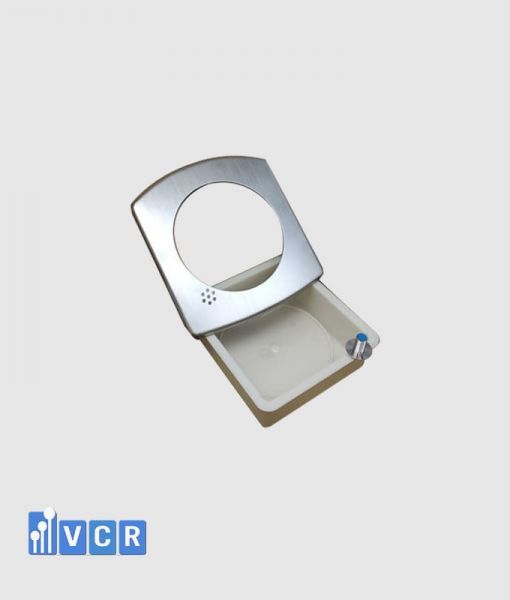In the operating room, pressure differential control is a key factor in maintaining sterility. This article helps you understand how to choose the right equipment, ensure stable pressure differential according to the regulations of the Ministry of Health and effectively prevent cross-infection.
- 1. Why Differential Pressure Gauges Are Essential in Operating Rooms
- 2. Common Types of Differential Pressure Gauges
- 3. Key Criteria for Selecting a Differential Pressure Gauge that Meets MOH Standards
- 4. Installation Position & Technical Considerations
- 5. Recommended Differential Pressure Gauges from VCR
- 6. Frequently Asked Questions
- 7. Need Help Selecting the Right Differential Pressure Gauge for a Compliant Operating Room?
1. Why Differential Pressure Gauges Are Essential in Operating Rooms
In modern operating room design, controlling differential air pressure (ΔP) is a mandatory factor to ensure aseptic conditions and prevent contamination. Installing a differential pressure gauge allows continuous monitoring of pressure differences between zones, helping to:
- Prevent contaminated air from entering the operating room
- Maintain a unidirectional airflow from cleaner to less clean areas
- Provide early warnings if the HVAC system or pressure balance fails
Differential Pressure Helps Control Cross-Contamination
In hospital environments - especially operating rooms, ICUs, and isolation areas - failing to maintain proper pressure differentials can lead to:
- Post-surgical infections caused by airborne microorganisms from corridors or adjacent rooms
- Cross-contamination between isolation and general care zones
- Reverse air movement, where lower pressure inside the OR allows contaminated air to enter
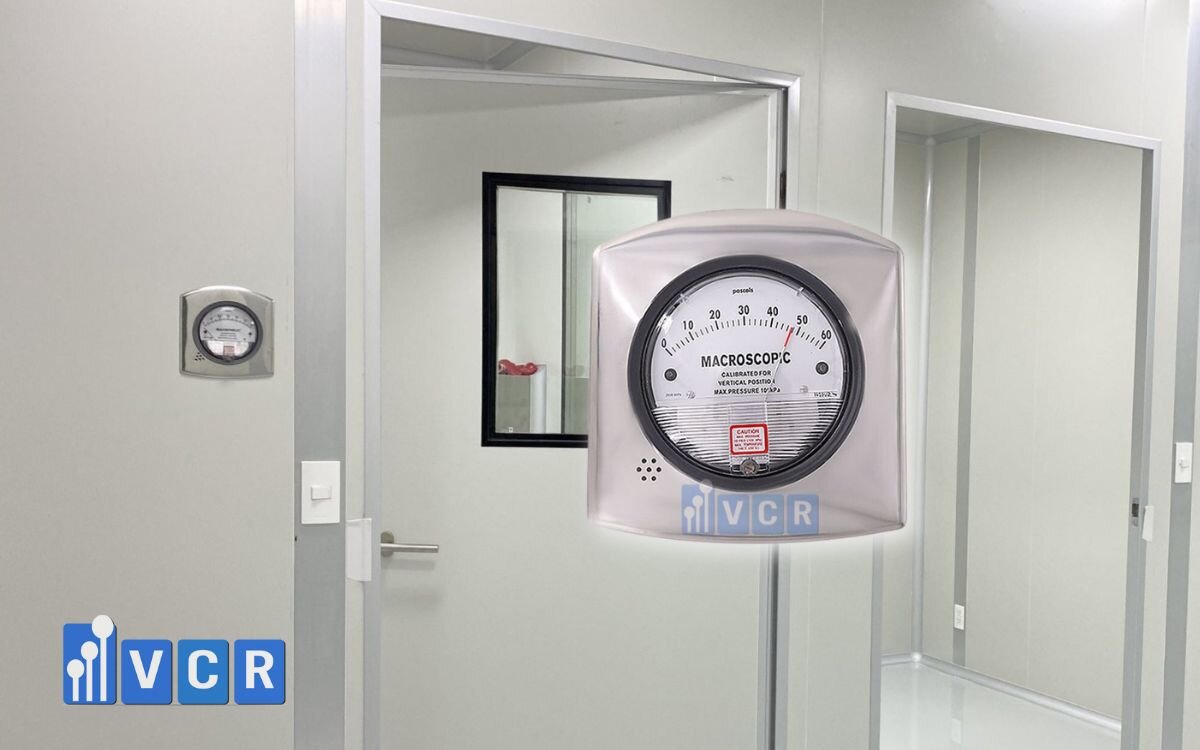
Ministry of Health (MOH) Standards for Operating Room Pressure
According to Circular 38/2018/TT-BYT issued by the Vietnamese Ministry of Health:
- Operating rooms must maintain positive pressure relative to corridors, typically between +5 Pa and +15 Pa
- The differential pressure between functional zones (operating, sterilization, and aseptic rooms) must remain stable, with variations not exceeding ±2 Pa
- Pressure should be continuously measured and displayed using fixed differential pressure gauges or electronic sensors
Consequences of Failing to Monitor Differential Pressure
If a differential pressure gauge is not installed or is poorly managed, the following issues may occur:
- Contaminated air infiltration leading to post-operative infections
- Undetected filter or HVAC leakage
- Non-compliance with ISO, GMP, or MOH standards, potentially affecting certification and operational licensing
See more:Supplier of Differential Pressure Gauges for GMP Clean Rooms
2. Common Types of Differential Pressure Gauges
Currently, there are three main types of differential pressure gauges used in cleanroom and healthcare facilities. Each type offers distinct advantages and suitability levels. Selecting the right model ensures compliance with MOH standards while optimizing cost and performance.
|
Type of Gauge |
Operating Principle |
Accuracy |
Suitable For |
Price Range |
|
Mechanical (Analog) |
Diaphragm mechanism |
±2% FS |
Standard operating rooms |
500,000 - 1,500,000 VND |
|
Digital (Electronic) |
Pressure sensor |
±1% FS |
ORs with BMS integration |
3,000,000 - 6,000,000 VND |
|
With Alarm Feature |
Equipped with buzzer/light |
Varies by model |
Emergency ORs, ICUs, high-pressure zones |
From 5,000,000 VND |
Quick Selection Guide
- Basic standard OR setup: choose mechanical gauge
- With BMS integration or data logging: use digital gauge
- Need immediate alarm or alerting system: select gauge with buzzer/light
3. Key Criteria for Selecting a Differential Pressure Gauge that Meets MOH Standards
Not all differential pressure gauges meet the stringent requirements of medical cleanroom environments. To comply with Vietnam’s MOH standards and maintain operational stability, consider the following five factors:
1. Sensitivity and Accuracy: ≥ ±2% FS
- The gauge must detect small pressure differences of 5-15 Pa, aligning with positive-pressure standards in operating rooms.
- Accuracy should not exceed ±2% of full scale (FS) to ensure reliable readings under varying conditions.
2. Clear and Easy-to-Read Display
- In fast-paced environments like ORs, readings must be clearly visible from a distance.
- For digital models, choose bright LED/LCD displays that remain readable under low lighting conditions.

3. Cleanroom-Compatible Materials
- The gauge face should be made from anti-static plastic or shatter-resistant acrylic, easy to disinfect with alcohol-based cleaners.
- The casing should be anodized aluminum or stainless steel (SUS 304) for durability and corrosion resistance.
4. Calibration and Maintenance Capability
- Prefer gauges with a built-in calibration valve, allowing quick verification without disassembly.
- In large cleanroom systems, choose models supporting on-site or remote calibration.
5. Integration with Building Management Systems (BMS)
- For modern hospitals, connecting the gauge to a central monitoring system (BMS) is essential.
- Select digital models with analog output (0-10V or 4-20mA) or RS485/Modbus communication for seamless integration.
See more: Latest price list of Differential pressure gauge used in electronics factory
4. Installation Position & Technical Considerations
A differential pressure gauge only performs effectively when installed in the correct position and with proper technical setup. Below are specific guidelines for operating rooms:
Recommended Installation Locations
Mount the gauge directly on the partition between two areas that require pressure control:
- Operating Room - Airlock: Ensures the OR maintains higher pressure than the buffer zone
- Operating Room - Corridor: Monitors the pressure differential between the clean zone and general traffic area
- Operating Room - Sterilization/Preparation Room: Maintains one-way airflow and prevents back-contamination
For gauges with external display, consider installing them on the corridor side for convenient monitoring without entering the operating room.
Ideal Mounting Height
- 1.4 - 1.6 meters from the floor, at average eye level for visibility and access
- When installing multiple stacked gauges, maintain at least 15 cm spacing between devices
Technical Installation Notes
- Avoid placing gauges near air outlets, as strong airflow may temporarily affect readings
- Do not install next to vibrating equipment (compressors, fans), as mechanical vibrations can impact stability
- Pressure tubing must be balanced in length, correctly oriented for positive and negative ports
- Do not expose tubing to chemicals, dust, or direct UV light
5. Recommended Differential Pressure Gauges from VCR
To meet the strict pressure control requirements in operating rooms, VCR offers a wide range of specialized differential pressure gauges, tailored to various budgets and system integration needs. Here are three recommended options:
1. Dwyer Magnehelic 2000 Series - Legendary Mechanical Gauge
- Origin: USA
- Mechanism: Mechanical diaphragm with clear needle display
- Common Ranges: 0-60 Pa, 0-125 Pa
- Accuracy: ±2% FS
- Advantages: Durable, no power required, easy to use
- Ideal for: Standard operating rooms, sterilization rooms, general medical cleanrooms
- Suggested Models: 2000-60PA, 2000-125PA
2. VCR DP-E120 - Electronic Gauge with Alarm
- Origin: Produced by VCR to cleanroom standards
- High-sensitivity pressure sensor, ±1% FS accuracy
- Features LCD display, calibration button, built-in buzzer and light alarm
- Supports BMS connection via 4-20mA signal
- Suitable for: Emergency ORs, ICUs, or rooms requiring immediate alert
- Units available: Pa, mmH₂O, or mbar
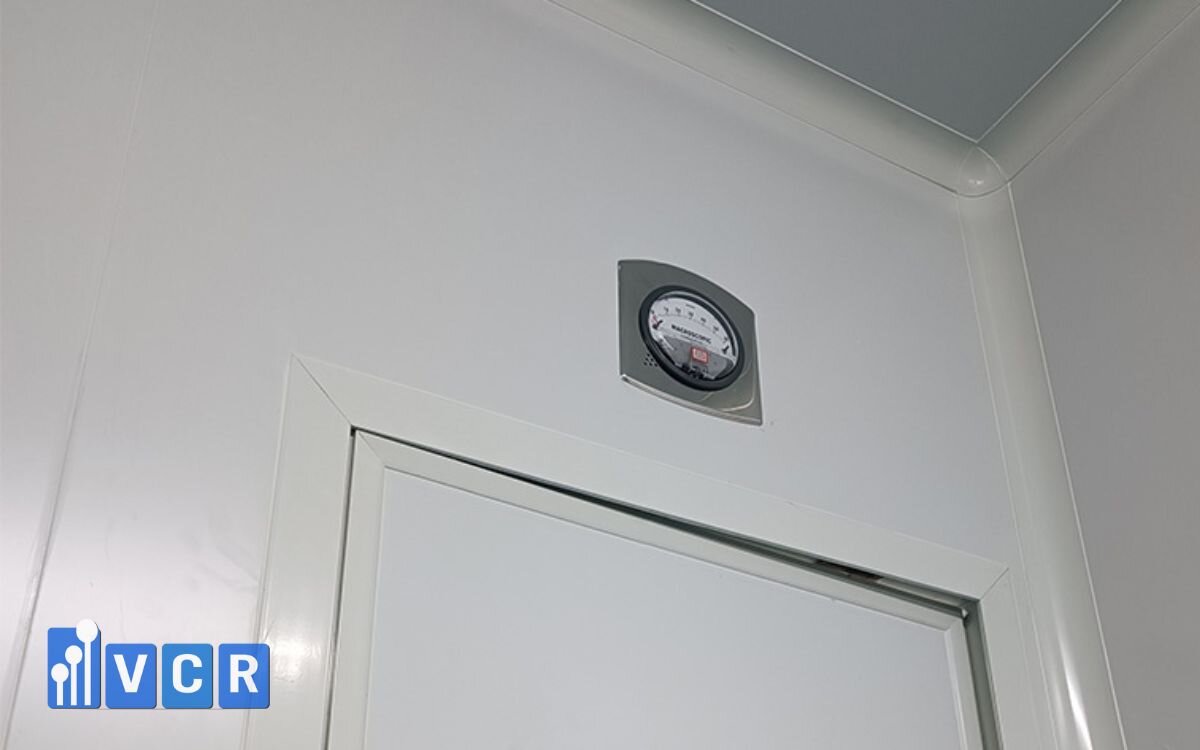
3. Combo Solution: Gauge + Corridor Display Box
- The gauge (mechanical or digital) is wall-mounted between two zones
- An additional display box in the corridor allows staff to monitor pressure without entering the OR
- Can include reset button and over-limit alarm
- Ideal for: Hospitals with strict operation control and inspection requirements
See more: Selecting the Perfect Differential Pressure Gauge for Your Cleanroom
6. Frequently Asked Questions
- Is it mandatory to install a differential pressure gauge in an operating room?
Yes. According to Circular 38/2018/TT-BYT, operating rooms must maintain a minimum positive pressure of +5 Pa relative to corridors, and this pressure must be continuously monitored using differential pressure gauges or electronic sensors. - Can I use a low-cost gauge for the operating room?
Not recommended. While inexpensive gauges may measure pressure, they often lack the accuracy and stability required. ORs need devices with low error margins (≤ ±2% FS), clear displays, dust protection, and easy maintenance. - How often should a differential pressure gauge be calibrated?
At least every 6 to 12 months, or according to the manufacturer’s guidelines. Regular calibration ensures accuracy and is critical during GMP audits or MOH inspections.
7. Need Help Selecting the Right Differential Pressure Gauge for a Compliant Operating Room?
Choosing the right differential pressure gauge helps not only to meet MOH compliance but also to ensure aseptic conditions and long-term operational safety. However, with so many options-from mechanical to digital, from basic displays to full BMS integration-it’s not always easy to decide.
VCR - Your Cleanroom Equipment Expert
With over a decade of experience in cleanroom technology, VCR provides complete differential pressure monitoring solutions for:
- MOH and ISO 14644-certified operating rooms
- Emergency rooms, ICUs, sterile zones
- Public/private hospitals, clinics, and aesthetic centers
What You Get with VCR
- One-on-one technical consultation tailored to your facility
- Genuine equipment with full CO, CQ, and calibration certificates
- Options for mechanical, digital, or alarm-integrated models
- Step-by-step installation guidance and remote technical support
- Transparent pricing, fast quotations, and tender document assistance
Contact us now for a free consultation:
Hotline: 090.123.9008
Email: [email protected]
Website: https://donghochenhap.com/
Diep VCR





